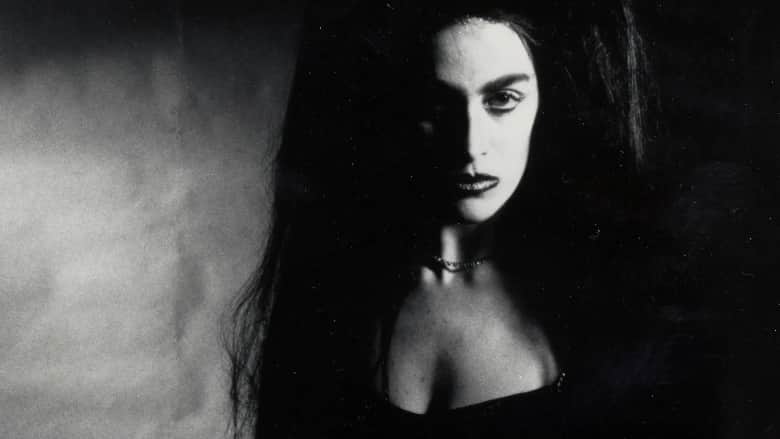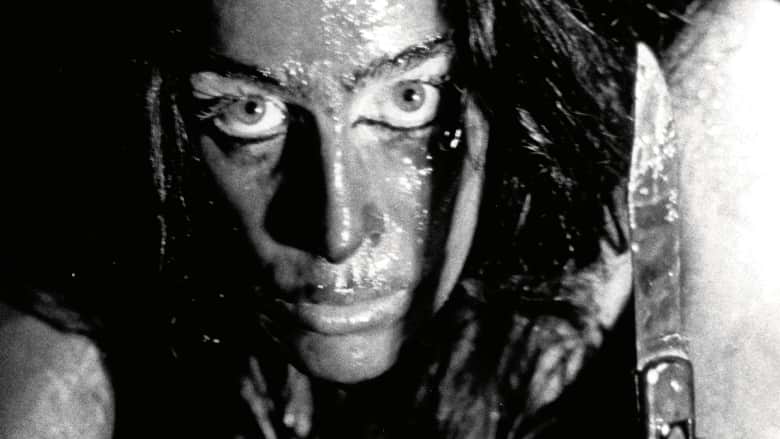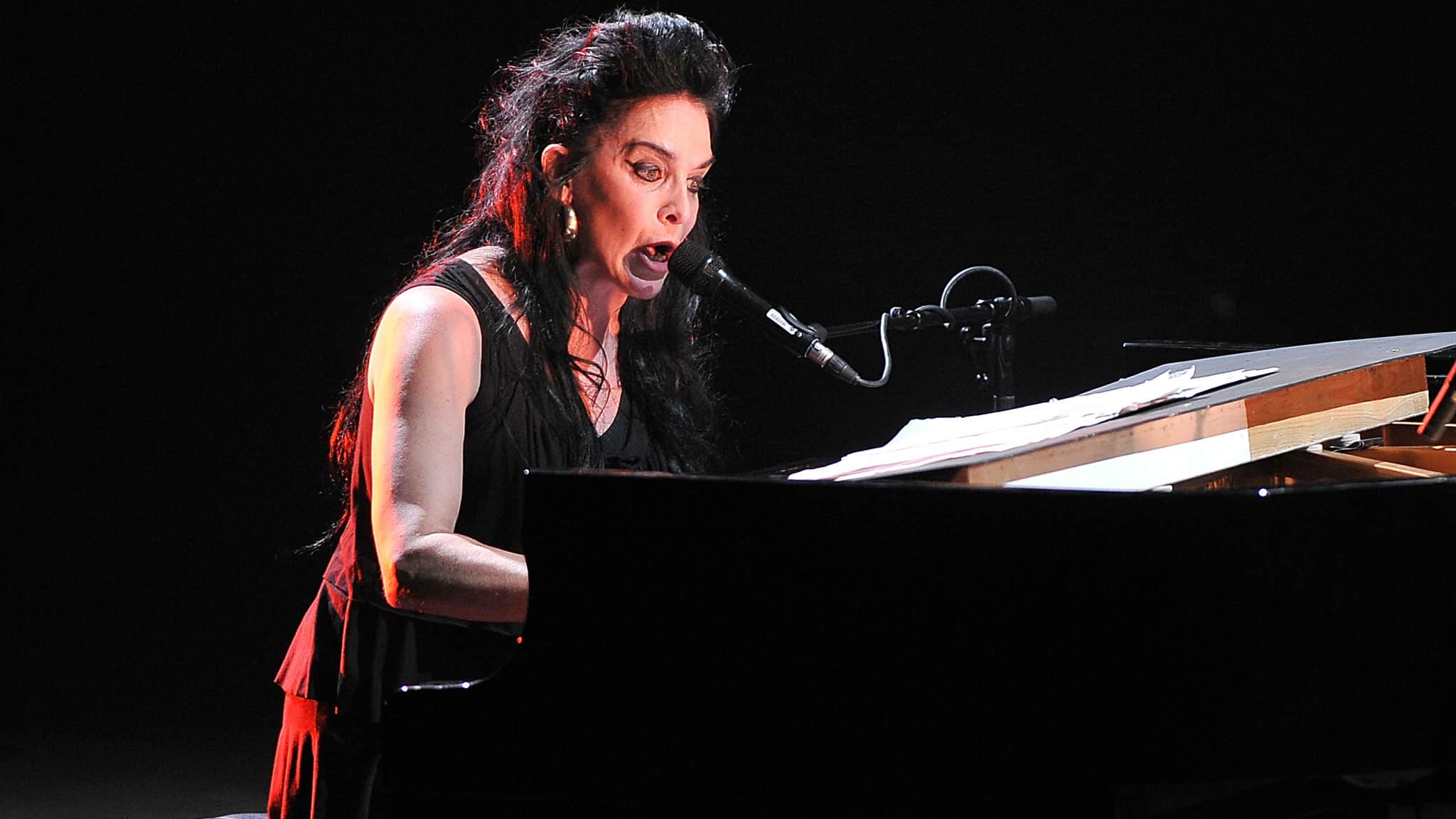One of the most influential and controversial performers of our time, Diamanda Galás has remained an underground force to be reckoned with. With a vocal range listed from three-and-a-half octaves to five, Galás summons the hidden truths of the marginalized. Drawing dark inspirations from martyrs and social injustices, salted breath echoes through the horrors of the human void in any Diamanda Galas interview, video, or album.
Origins
San Diego-born Galás began her relationship with music at the age of three. Her father was a gospel choir director and taught her to play piano before introducing blues standards and New Orleans jazz. As part of an eclectic education, she studied a wide range of musical forms like opera and composition. As well as biochemistry at University of Southern California, specializing in immunology and hematology.
Post-graduation she sought funding to get her music career off the ground and was attracted to street life of the disenfranchised. This inspired Galás to campaign for AIDS education and become involved in collective action. Her avant-garde musical style is frequently described as a spiritual possession and exorcism. Vocals are often improvised with reverb microphones to acquire the guttural howling of a grim reaper tolling the bell for the dead by pounding piano keys. She whispers incantations and speaks in tongues to conjure a soundtrack for revenge.
The Litanies of Satan
Drawing from her love of gothic literature, a section of Les Fleurs du Mal by Charles Baudelaire was utilized for her debut. The Litanies of Satan is Galás’ most well-known album, consisting of two terrifying and provocative tracks. The title piece is a layered assault of mournful shrieking and the summoning of a chattering swarm of bats. According to the liner notes, it “devotes itself to the emeraldine perversity of the life struggle in Hell.”
The album’s B-side is “Wild Women with Steak-Knives (The Homicidal Love Song for Solo Scream)”. A vengeful commentary of violence against women. In a 1984 Diamanda Galas interview, she described “Wild Women” as having less to do with feminism and more of a terrorist anthem.
“My idea of what you do with a rapist is you castrate him, and you burn his house down and you brand him with the label ‘BLB’ standing for Black Leather Beavers. Women with shaved heads and black leather outfits going out and performing castrations for rape victims so that we don’t have to deal with legal policies that don’t seem to work at all in this country.”
Here’s a clip of a Diamanda Galas interview from 1984:
The Sporting Life
In the same vein, the controversial title track on The Sporting Life contains a comprehensive argument among a violent group of women. Distinct characters holding an unknown male against his will and squabbling over his fate.
With few details about the spoken word piece, the listener can only draw their own conclusions. Some suggest it is a flock of harpy monsters about to tear the man apart while others claim it is a Manson Family-like biker gang. Hell bent on torturing the prisoner before sacrificing him to crows, reminiscent of exploitation films like Faster Pussycat! Kill! Kill! and She-Devils on Wheels. Lastly, one could imagine the song being an internal dialog of one woman having just met someone and weighing her desires and repulsions.
Double-Barrel Prayer
In an early nineties interview, Galás admitted that she regularly carried a .38 special handgun with her. When questioned further, she confessed not believing that women should walk down the street trying to shrink themselves for safety. She thought they shouldn’t need to appear invisible to be able to cross the street without conflict as part of the modern conditioning, instead encouraging necessary violence to preserve personal peace of mind.

“Double-Barrel Prayer” expressed this message with unnerving synths and operatic screams. The music video is minimalistic, stylized with the glare of industrial doom. Galás writhes on the floor and fondles a pistol in leather gloves. A call to action for victims of sexual assault to take vengeance on their abusers.
The video flashes grainy security camera footage of Galás screaming in public spaces and interludes of bathing in a basin of blood. Directed by Peter Christopherson, it sparked controversy for use of “gore” and was banned by MuchMusic. MTV deemed “Double-Barrel Prayer” the most offensive music video of 1988.
Plague Mass
Just prior to the death of her brother, Galás had been composing an operatic trilogy that detailed the suffering of people with AIDS. Masque of the Red Death brought her into direct conflict with the church. A sensory affront, she addresses the hypocrisy of clergy for their indifference to the casualties of the epidemic.
Selecting material from her trilogy, she created a performance piece for the Cathedral of St. John the Divine in New York. During the performance of “There Are No More Tickets to the Funeral,” she appeared naked to the waist and dripping in blood. The work was condemned as blasphemy by the Catholic Church, and Diamanda herself was considered “a curse.” Audio of the performance was released as a live album under the title Plague Mass in 1991.
There was another excellent Diamanda Galas interview in 1992, right around this critical point in her career:
Schrei 27
After seeing the experimental film Little Boy, Galás met with Italian director Davide Pepe to collaborate on a film of their own. Originally conceived in 1994 as a work for radio, Schrei 27 combined cruel visuals with Galás’ updated compositions. An absolute horror, the abstract plot follows a person arrested for treason and tortured for twenty-seven minutes.
— FOUNDATIONS OF HORROR —
Further explore these subgenres & tropes. more>>
#Gothic horror | #Feminist horror |

Galás and Salvatore Bevilacqua portray the prisoner held in a medical facility, chemically and physiologically battered for confession. When paired with Galás’ agonizing vocals and periods of silence, it’s a fair assessment that Schrei 27 is not for the faint of heart.
Galás said of her film, “As the incarcerated know, there is no correct answer to any question asked by an interrogator. The object of this kind of torture is complete demoralization and the erasure of all that the captive has ever known, including the fact that he was ever a human being.”
Other Media
Beyond primal screams and operatic suicide poems, Galás also interprets a wide range of blues songs with her unique piano and vocal styles, best represented with covers of artists like Willie Dixon and Screamin’ Jay Hawkins. Switching up genres, country western ballads become dark dirges of love and murder. Lefty Frizzell’s “Long Black Veil” and Johnny Paycheck’s “I’ve Got Someone To Kill” are transformed to confessions of bitter prairie haints.

Referencing Cante Jondo vocal styles, Galas gives her ghastly breath to the Mexican folk ballad, “La Llorona,” based on the legend of the weeping woman who searches for her children that she drowned. Galas also took part in the album Closed on Account of Rabies, a tribute to Edgar Allan Poe. Her reading of “The Black Cat” is the longest recording on the compilation.
Diamanda has referenced the 50s B-film The Blood of Dracula as an early influence on her work. She was particularly transfixed by the sound effects of screams mixed with feral cat hisses. These horror cinema origins naturally gave way to Galás working on soundtracks for the genre. She offered her distinct chattering whispers and shrieks in Francis Ford Coppola’s Dracula. Additionally, she provided the voices of the dead in Wes Craven’s The Serpent and the Rainbow and recorded a cover of “Dancing in the Dark” for Clive Barker’s Lord of Illusions.
Diamanda Galás continues to utilize her voice as an instrument in indicting those profiting off the suffering masses. She is now resurrecting milestones of her artistry through remastered mixes that renew a shared trauma among fans. She is calling the audience into action at a critical point in history, amid another pandemic and impending war.
Last Updated on April 24, 2022.

